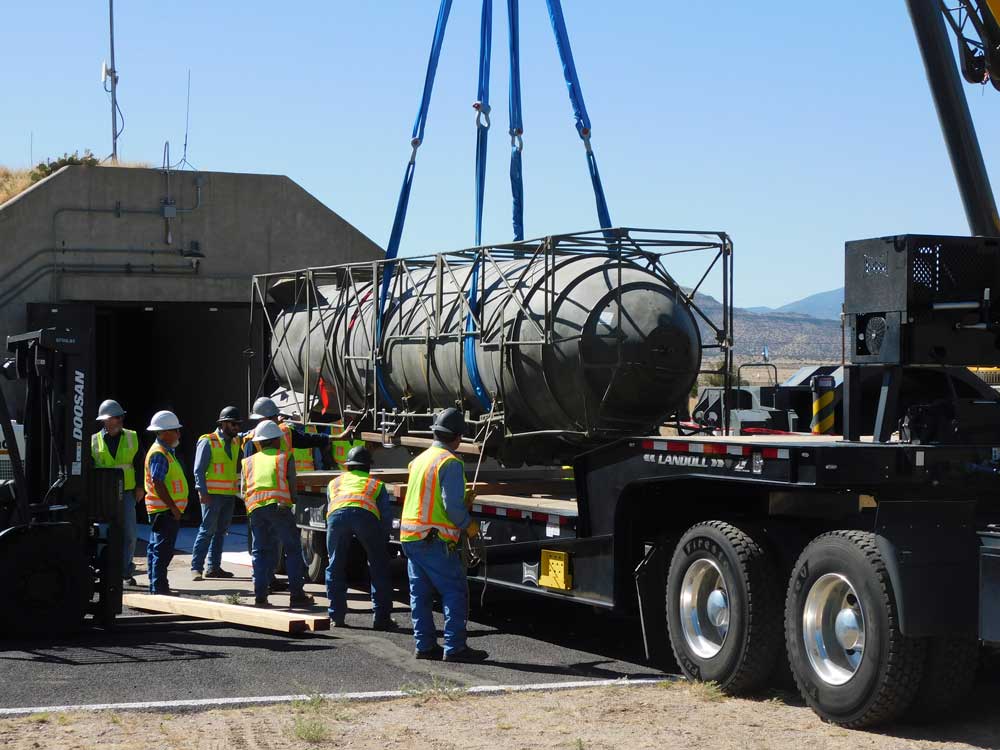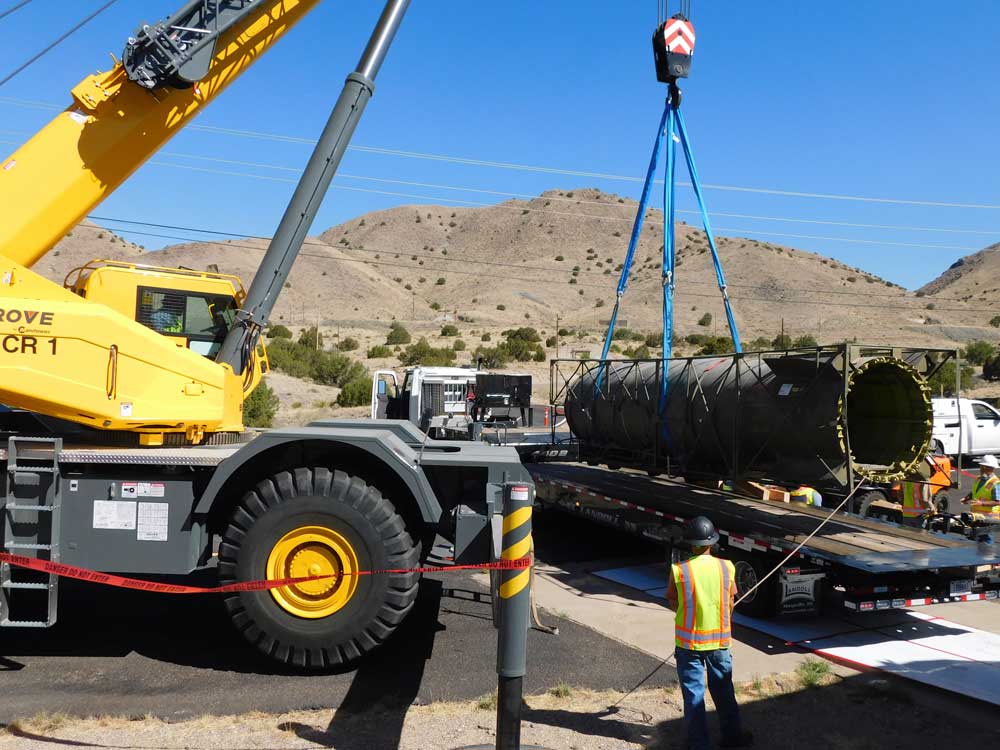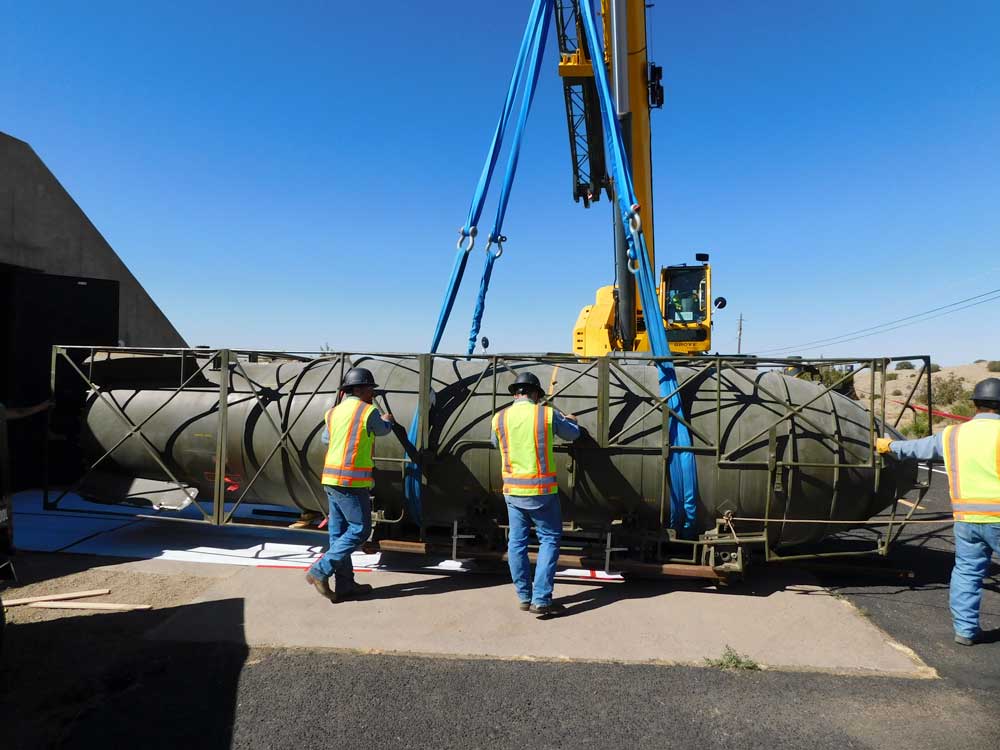Dismantlement and disposition required

A massive 25-ton inert nuclear-bomb trainer recently left storage and was slowly and carefully transported to Kirtland Air Force Base for its end-of-lifecycle dismantlement and disposition. Built in 1954, this Cold War relic had been sitting in storage for six decades, retired but not quite forgotten.

Moving this last-of-its-kind weapon trainer took months of planning due to its sheer size and weight. With help from multiple teams across Sandia, including the Structural Services team, the Accident Response Group and the Legacy Hardware Laboratory team, the Mk-17 Legacy Nuclear Weapon System trainer was the latest item in the Weapon Dismantlement and Disposition Program to be moved into the final stage of its lifecycle.
Retirement, dismantlement and disposition is an important step in the lifecycle of a nuclear weapon, the last but essential phase that ensures our nation’s nuclear arsenal remains safe and secure. In Phase 7, a weapon is carefully taken apart piece by piece, and the internal components and materials are identified and disposed of.

Sandians play a key role in this critical step. During dismantlement they must identify all hazards and determine its appropriate disposition path. In the case of a trainer, which has no nuclear material, care must still be taken to ensure there are no other hazards within the internal components.
The process of dismantling and disposition will continue over the next several weeks. To see a replica of the massive Mk-17 bomb, visit the National Museum of Nuclear Science & History.